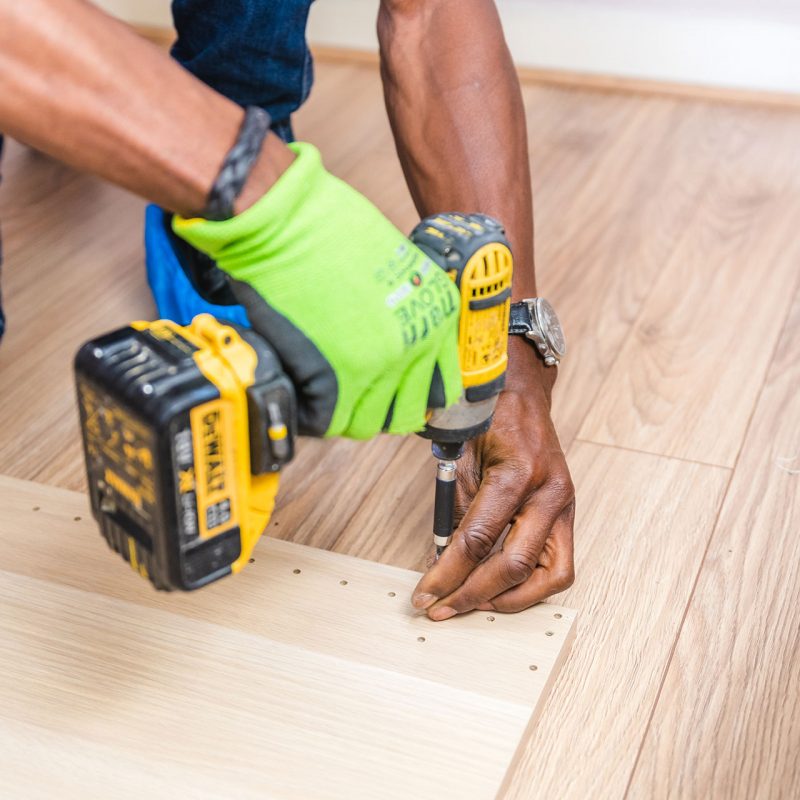How Will My New Flooring Be Installed?
We’ve all been there during a remodel. “I’ve reached that pivotal moment,” you tell yourself. You’ve taken the time to carefully select the flooring products that you feel works best for your remodel, and the project is all green lit and ready to go.
You know that a professional will arrive soon to install your new floor, but you are still a bit curious about the actual installation process. You know, the little details.
What exactly will this worker be doing while in my home? How many stages of work until my new floor is complete? This is where we come in; to help you better understand the installation process required for the three most popular types of new flooring purchases.
Different Installation Process:
Laminate Floor Installation
Wood Floor Installation
Before we begin reviewing these three installation processes, it’s important to give some basic material information. Hardwood flooring and laminate flooring is typically manufactured and sold in pre-cut, long and slender planks. These planks are boxed. Carpet, low pile and high pile is typically manufactured in long, wide rolls. Portions are stretched and cut accordingly.

1. As always, your City Floors tech will clean and prep the underfloor.
2. Planks are typically chosen from various raw material boxes to be cut and nailed around the parameter of the room by hand.
3. After the perimeter planks are laid far enough inward to allow for enough working space, the installer can begin using a larger flat nailing tool. The planks are nailed in, one at a time, from one end of the pre-laid perimeter to the other.
4. Depending on your needs, City Floors can have your installer seal your hardwood in a variety of fashions.
5. You might be thinking, “What if I chose a laminate product? What then?” Well, don’t fret. We’ve got you covered here as well.
1. Your City Floors tech will clean and prep the underfloor.
2. If a vinyl backing is not attached to the back layer of the laminate planks, one will be laid out first.
3. The laminate planks do not need to be nailed. They typically attach via a tongue and groove locking system (i.e. one side of each plank has a tongue cut and the other a groove for locking said tongue in place.)
4. A perimeter might not be necessary with laminate and we’ll typically have your installer work from one side to the other, cutting various necessary lengths of planks along the way.
5. Keep in mind that we might have the installer leave a little bit of space between your laminate planks and the wall of the perimeter. This is common for a variety of reasons; you just need to remember that it might help prevent bowing of the planks in the future.
6. What about if my new flooring is carpet? Well, there is a few more steps involved. Let’s have a look.
1. Your City Floors product installer will first clean and prep the floor.
2. Any trim items (i.e. room doors,) that need to be removed are removed prior to the laying of the tacking boards by your installer. We want to also remind you that an installer might use tack-less boards without these tiny nails. These boards are instead glued onto.
3. Board, with or without tacking, is typically laid around the perimeter via nailing. We advise installers to be safe with tacking board as they work with it. This is because tiny tack nails are sticking out of the top of it, and these nails are more than sharp enough to catch rug.
4. The padding is then glued down in cut segments that are unrolled. The installer typically leaves a few inches additional near the wall to work with.
5. The carpet is then rolled over top of said padding, stretched with one of several tool options, and then attached to the boards on the opposite side of the room.
Let City Floors Install Your Flooring
We hope that by reviewing the installation procedures for each of these three popular types of flooring options, that you are able to have a better peace of mind during this eve of your new floor installation. This piece has only covered the installation of three types of flooring products. For care, maintenance and cleaning, you should seek additional information as each product has its own set of guidelines for such things.
About
We are a company who’s been in business since 2002 with over 18 years of experience and great customer service. Is a family owned licensed and insured providing high quality service and beauty to homes in Central Florida.
Products
Store Hours
Monday – Friday:
10:00am – 6:00pm
Saturday – Sunday:
10:00am – 3:00pm
Contact Information
Phones:
Winter Park: 407-622-0699
Winter Springs: 321-203-4340
Locations:
501 N. Orlando Avenue, #155
Winter Park, FL 32789
1425 Tuskawilla Rd. Suite# 133
Winter Springs, FL 32708

